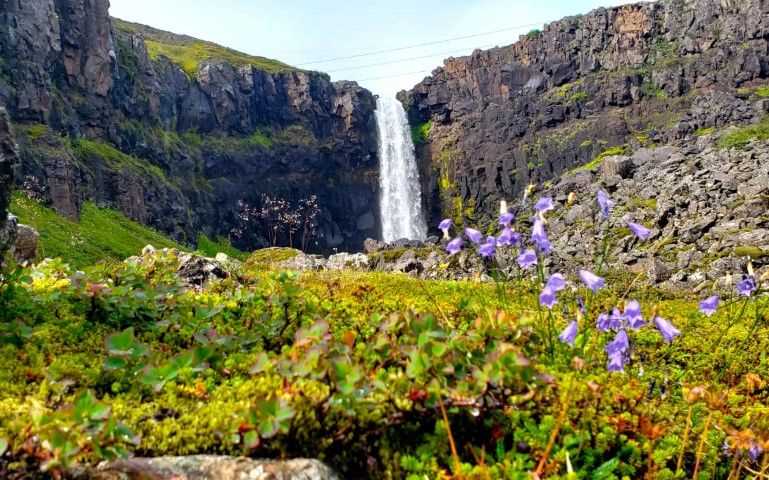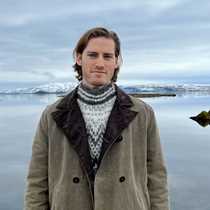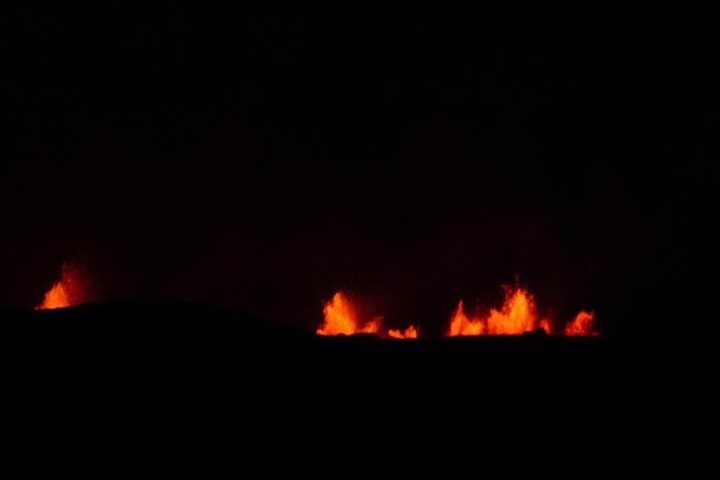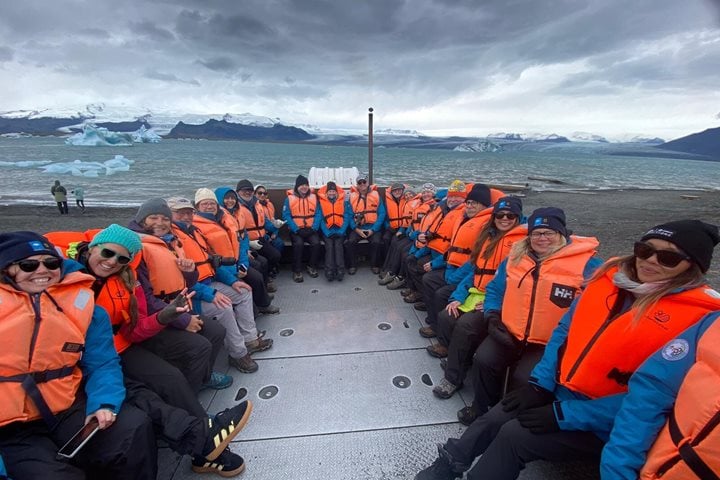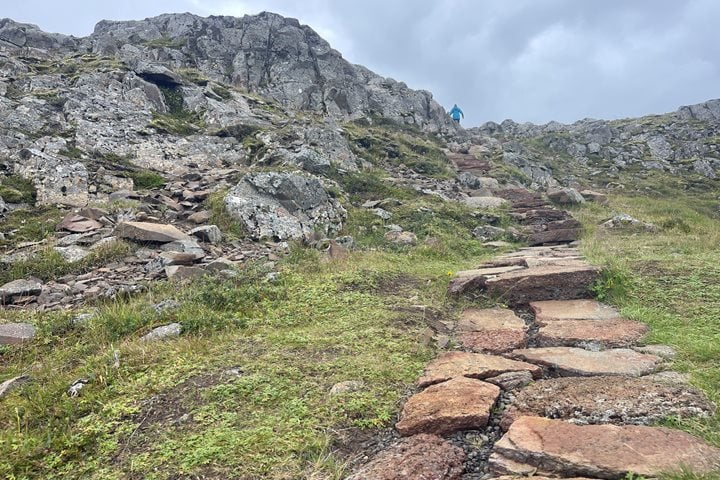After saying goodbye to the north of Iceland, we were finally in the east, with its impressive fjords and mountains. The morning was spent at sea, which gave us the chance to hear interesting presentations while navigating from Eyjafjörður in the north to Reyðarfjörður in the east.
It was a special day because it was the first time ever National Geographic Explorer has visited Reyðarfjörður. In fact, it's the first time any expedition ship has visited the place. The locals were happy to welcome us to their small community of around 1,100 inhabitants. This is actually the most populous fjord in east Iceland but it is in large part due to the fact that the biggest aluminum smelter in Iceland is found in Reyðarfjörður and employs hundreds of workers.
The first impression our guests had was probably how unpredictable the weather was. It was raining as we were docking but once the guests were out, ready for adventure in their rain gear, the sun decided to come out. There were two main options for the afternoon—a strenuous hike toward the mountain of Grænafell, or a shorter hike to one of the most interesting museums in Iceland, the Icelandic Wartime Museum, which tells the story of the second largest Allied base in Iceland in Reyðarfjörður. That option also brought our guests to a beautiful waterfall with basalt columns at the backdrop.
The long hike was picturesque and offered impressive views of the landscape. It was particularly beautiful with the typical Icelandic mix of sunshine and rain. Our hike started at the ship and took the hikers the majority of the way up to mount Grænafell (1,300 ft). Along the way, our guests saw a big canyon with a freshwater river carving through layer upon layer of basalt lava.
We continued our voyage to the southeast to spend the night docked in the small village of Djúpivogur, waiting for tomorrow’s adventures.

